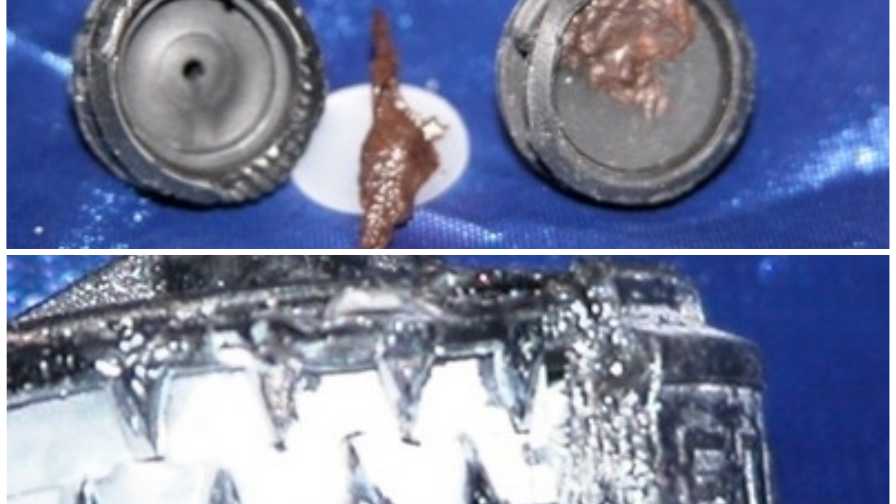How You Can Minimize Blocked Greenhouse Irrigation Lines

Emitters can be blocked by iron feeding bacteria (left) or chemical deposition in the labyrinth (right).
Uniform, precise watering is necessary to obtain maximum yield and optimum water use efficiency. It also reduces excess leach water, reducing the need to remove nutrient feed water out of the greenhouse.
Irrigation lines and drippers/emitters may become blocked during the growing season. These blockages can be categorized as physical, chemical, or microbial.
Physical
This may occur in new installations or in regularly used irrigation systems. It is caused by sand or soil or growing media debris, as well as physical defects of the dripper/diaphragm that partially block the flow of solution.
Chemical
Impurities or improper fertilizer mixing can result in buildup of salt deposits on the walls of the irrigation lines or at the emitters/drippers. Lower quality fertilizers with higher impurities may result in insoluble particles that lodge in the emitters/drippers. Water sources with high levels of calcium and magnesium carbonates may result in increased precipitation on the irrigation line walls or at the emitters. This problem can be reduced by:
• Maintaining the solution pH between 5.2 to 5.8
• Cleaning lines with an acid solution between crops. Follow manufacturers’ directions for this process to minimize damage to the internal workings of the emitter.
• Changing emitters, especially if they are older than six or seven years
• Cleaning screens on a regular basis
• Using an alternative water source with a low bicarbonate level as a source of irrigation water (blending water with high bicarbonate levels with one that has lower levels is also a technique to use)
• Using commercially available fertilizer line cleaner as per manufacturer’s label.
Microbial
Microorganisms are able to live in the irrigation line and may be triggered to proliferate under certain conditions. Biofilm formation is a major problem that requires regular treatment to prevent buildup. The higher summer temperatures will promote microbial populations in the irrigation system, resulting in emitter blockages. These organisms are capable of blocking emitters, screens, etc. disrupting nutrient solution delivery. To address this problem the following steps are recommended:
• At the end of crop cycle, thoroughly clean all lines with low pH solution as above.
• In between crops, disinfect lines using commercially available products (follow manufacturer’s instructions).
• Biofilm removal requires more than a simple low pH treatment. Several manufacturers have products and treatment systems to address this problem.
• Change emitters and thoroughly clean filters and flush lines before commencing the next crop.
• Ensure fresh water supply, fertilizer tank, water reservoirs, etc. are free of carbon based products as the micro-organisms usually require a carbon source to increase in population.
• Use alternate water supply that does not have microbial promoting nutrients (e.g iron, or sulphur).
Here are some other key factors that may lead to emitter blockages:
• Increased use of well water as the main source of water for the greenhouse, especially with higher calcium or sulphur levels
• Increased use of recirculation and inability to maintain the ideal nutrient balance
• Increased levels of calcium applied and, if allowed to accumulate with excessive phosphorus and/or sulphates, will result in precipitates
• Improper pressure due to partially blocked filters
• Low water supply decreasing flow rates.










